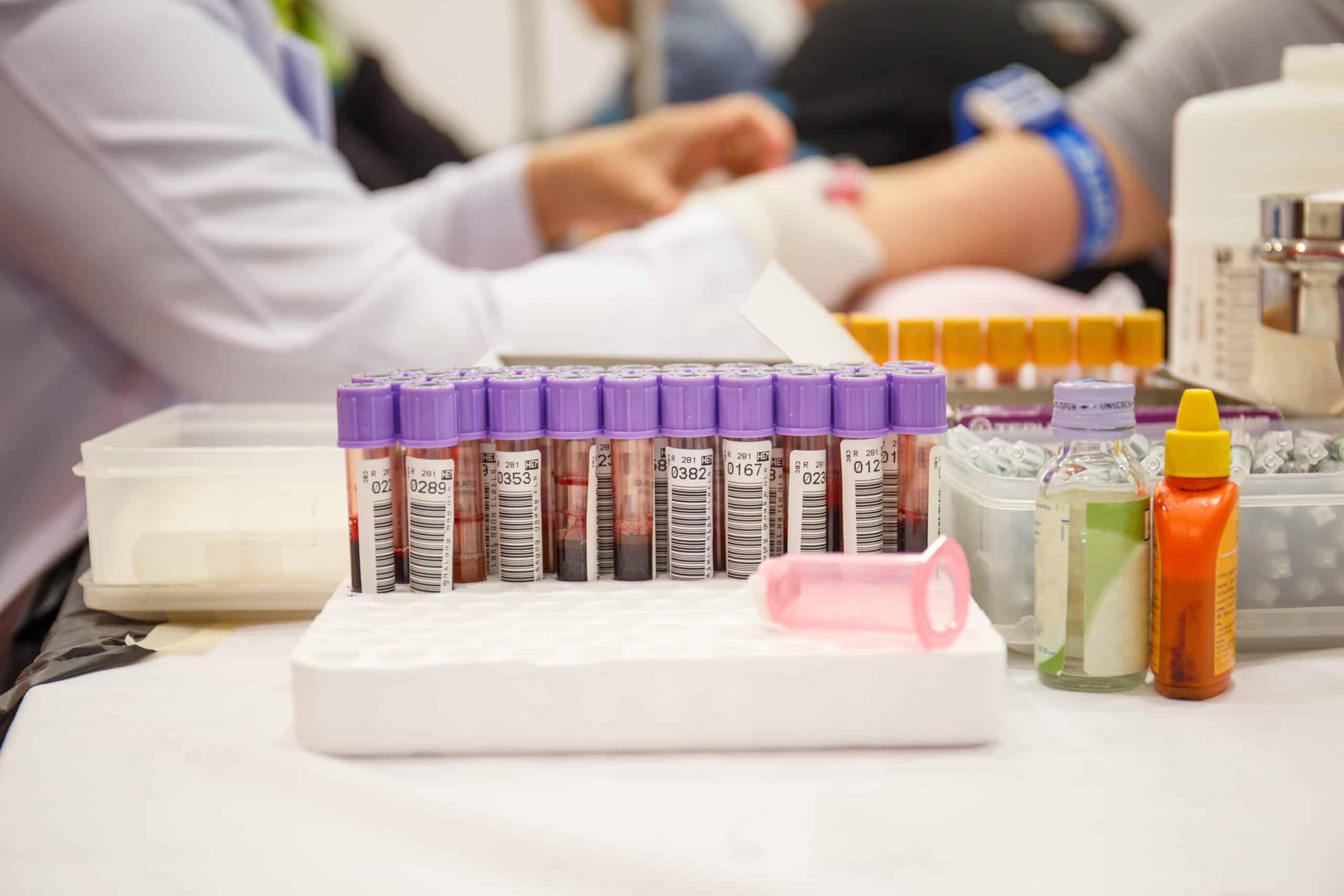Harvard Health Letters
As a smart medical consumer, you know it’s important to look over the results of your routine blood work, even when the numbers are all within the normal range. But what if you notice that some results are at the high or low end of that range? Should you be concerned about this?
“It’s tricky, because in some tests, a borderline result makes no difference. In others, it might indicate an important change in health that we need to follow or act on,” says geriatrician Suzanne Salamon, M.D., assistant professor at Harvard Medical School.
About normal ranges
Each lab establishes its own normal ranges for blood test results. The ranges are based on various factors, such as the makeup of the local population where blood is drawn, the instruments used to look at the specimens, and the technologies used to separate various components in your blood.
When you look at a printout of your lab results, you’ll find the normal ranges for each blood marker next to your personal blood test results. For example, if your routine blood work includes a test for calcium in the blood, your lab may list the normal range for calcium as 8.3 to 9.9 milligrams per deciliter (mg/dL). If your result is 9.1 mg/dL, right in the middle, you can feel confident that your calcium level is normal.
Interpreting the numbers
What if a blood test result is at the very low or high end of normal, or even slightly outside the normal range? Is that a red flag? “Don’t jump to conclusions,” warns Salamon. “Blood test results can vary a little bit, depending on the lab. And many people are consistently on one side or the other of the normal range, and for them, that’s healthy,” says Salamon.
Take, for example, a routine measure of blood urea nitrogen (BUN), a waste product from the breakdown of protein you eat. Excess urea is removed from the blood by the kidneys. High BUN levels can indicate that kidney function is declining. So what if your BUN level is at the very high end of the normal range? “If I see that it’s borderline high, I might ignore it,” says Salamon. “It’s common for BUN to go up if you don’t drink enough, and that can happen when someone is fasting before having blood drawn.”
Minor fluctuations in test results may also reflect:
–recent infections
–medication side effects
–stress
–gender
–age
–inaccurate lab procedures.
Salamon emphasizes the need to look at someone’s entire picture of health to interpret a blood test. In our BUN example, a number just above the normal range might be a sign of a bleeding ulcer in the stomach or small intestine, not failing kidneys. “It depends on the person, the symptoms, and the other conditions that are present,” she says.
When to be concerned
Instead of looking at a one-time test result in the high or low end of normal, Salamon says she looks at trends. “I get concerned if there’s a change from what’s been normal for years, for you. If your test result is always in the high normal range, I’m not concerned. But if it’s always been in the low normal range, and today it’s high normal, that’s different.”
For example, let’s say you have your blood sugar (glucose) measured every three years (that’s how often the American Diabetes Association recommends routine blood sugar testing for everyone over age 45, if test results are normal). The normal range is between 60 and 100 mg/dL; levels of 100 to 125 mg/dL are diagnosed as prediabetes, approaching full-blown diabetes. If your result has usually been 81 or 82 mg/dL, but your latest test is suddenly 98 mg/dL, it’s still normal, but the change might spark a conversation about your diet. “Have you put on weight? Are you eating more carbohydrates and sugary foods? Why is your blood sugar suddenly going up?” asks Salamon.
Some tests don’t have any room for fluctuation, such as tests for two liver enzymes, AST (aspartate aminotransferase) and ALT (alanine aminotransferase). “If these levels were always normal, and now one of them starts to go up one or two points, there might be something wrong with liver function, and I’d want to know why,” says Salamon.
What you should do
Get an annual check-up, and don’t skip the routine blood work. Even if you feel that you’re healthy, it’s still a good idea to have a continuous record of standard blood markers, so your doctor can look for trends.
What happens if you have some worrisome results at the high end of normal? “I might repeat the test,” says Salamon. “If it is still a concern, we can investigate the cause.”
And the great news is that staying on top of certain numbers on the edge of normal can help you keep from developing chronic disease, as with the blood sugar example mentioned earlier. If your blood sugar numbers are rising within the normal range, you have plenty of time to start exercising and losing weight to bring them back down. And even if they’re in the prediabetes range of 100 to 125 mg/dL, you can still make lifestyle changes to keep from progressing to full-blown diabetes. Aim for 150 minutes of moderate-intensity exercise per week, eat a healthy diet and control your weight.
Those same lifestyle changes can help if your cholesterol numbers are increasing. Your target for a maximum level of total cholesterol depends on your risk factors for heart disease and stroke. But whatever the target, if your numbers are too high, cut out unhealthy fats, such as fats from red meat, whole-fat dairy products and fried foods. And control your weight.
Keep watching your blood work, too. It’s important to be proactive about maintaining good health. But remember: “Each test has its own rules, and it takes years to understand how the numbers work together,” says Salamon. “Leave the interpretation up to your doctor.”
When your doctor orders routine blood tests, it may sound a little like a secret code: a CBC, a CMP and a lipid panel. Each of these is a group of related tests, called a panel, that helps doctors interpret your health. Here are the basics of each.
Comprehensive metabolic panel (CMP). A CMP measures various chemicals in your blood, such as blood urea nitrogen and creatinine to test kidney function; blood glucose (sugar) to test for diabetes; ALT (alanine aminotransferase) and AST (aspartate aminotransferase) to test liver function; and calcium, which can indicate an overactive parathyroid gland or sometimes cancer that has spread to the bones. The CMP also measures other aspects of health, such as blood levels of protein, potassium, calcium, sodium and chloride.
Complete blood count (CBC). The CBC measures the types of cells in your blood, such as the red blood cells, white blood cells (there are five main types) and platelets, as well as hematocrit (the percentage of blood that’s made up of red blood cells), hemoglobin (a protein in red blood cells that carries oxygen), and the size and shape of blood cells. Results can indicate numerous conditions, such as different types of anemia, infection, kidney disease, dehydration and blood cancers.
Lipid panel. The lipid panel measures each of several types of fat in your blood, including “good” HDL cholesterol, “bad” LDL cholesterol, total cholesterol and triglycerides. The levels of these fats help your doctor assess your risk for heart disease. People at increased heart disease risk or who have diabetes should get tested yearly. It may be less often if you have a normal risk. Aim for a total cholesterol of less than 200 milligrams per deciliter (mg/dL), HDL of more than 60 mg/dL, LDL of less than 130 mg/dL and triglycerides of less than 150 mg/dL. Your targets may be lower if you have heart disease or risk factors for it.













